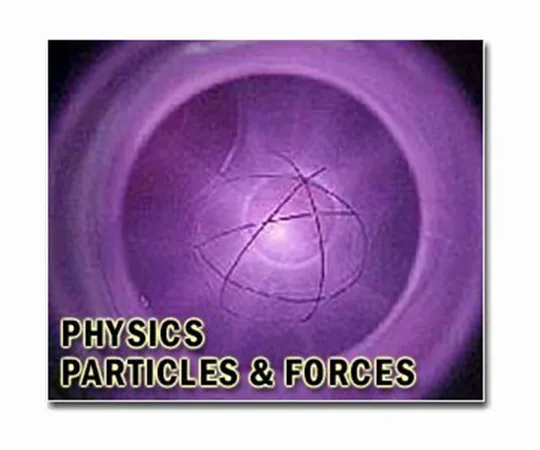
Transforming Quantum Technology: A Breakthrough in Generating NOON States
2025-04-01
Author: Siti
Introduction
In a groundbreaking development, researchers at the University of Liege have unveiled a revolutionary method to create quantum superpositions of ultracold atoms at unprecedented speeds. This innovation aims to overcome the limitations of traditional approaches that have long hindered the practical application of NOON states in quantum technologies.
Understanding NOON States
NOON states, which are remarkable quantum superpositions where particles occupy distinct states simultaneously, have been likened to the famous thought experiment of Schrödinger's cat. Doctoral student Simon Dengis, part of the Quantum Statistical Physics (PQS) group at ULiege, has introduced a technique that combines quantum control with geometric optimization. This collaboration enables the formation of NOON states in a fraction of the time it previously took.
Innovative Techniques
Dengis likens his method to navigating through a crowded supermarket efficiently. By smoothing out the quantum pathways, akin to strategizing a shopping route to avoid sharp turns, the atoms can transition faster. Previously, generating NOON states could take tens of minutes—often exceeding the longevity of the ultracold atomic systems involved due to energy constraints that slowed the process down.
Achieving Efficiency
The research team has ingeniously implemented counterdiabatic driving along with optimal geodesic path planning, techniques that allow for more efficient traversal through the quantum state space. As laboratory director Peter Schlagheck explained, this innovative strategy can accelerate the preparation of NOON states by an astounding factor of 10,000, while maintaining an impressive 99% fidelity—essentially ensuring near-perfect outcomes. With this advancement, the time it takes to prepare a NOON state has drastically decreased from approximately ten minutes to just 0.1 seconds.
Applications of NOON States
This leap in speed paves the way for transformative applications in various fields, including quantum metrology and quantum information science. Potential uses for NOON states extend to cutting-edge devices like quantum gyroscopes, which could revolutionize navigation and positioning systems, and compact gravitational sensors that may have profound implications for scientific research and practical applications.
Theoretical and Experimental Synergy
The success of this research exemplifies the powerful synergy between theoretical models and experimental validation. By harnessing advanced mathematics and rigorous experimental methodologies, the ULiege team is bridging the gap between abstract quantum concepts and tangible tools that could reshape technology as we know it.
Conclusion
Understanding quantum superposition is crucial, as it allows a system to exist in multiple states simultaneously until measured. NOON states personify this principle, with particles existing in two different locations until the act of measurement collapses them into one state or the other.
In summary, the accelerated generation of NOON states is not just a scientific triumph but a significant stride towards harnessing the full potential of quantum technology. As researchers continue to explore these exciting frontiers, we may soon see practical applications that will redefine our understanding of physics and its capabilities.

 Brasil (PT)
Brasil (PT)
 Canada (EN)
Canada (EN)
 Chile (ES)
Chile (ES)
 Česko (CS)
Česko (CS)
 대한민국 (KO)
대한민국 (KO)
 España (ES)
España (ES)
 France (FR)
France (FR)
 Hong Kong (EN)
Hong Kong (EN)
 Italia (IT)
Italia (IT)
 日本 (JA)
日本 (JA)
 Magyarország (HU)
Magyarország (HU)
 Norge (NO)
Norge (NO)
 Polska (PL)
Polska (PL)
 Schweiz (DE)
Schweiz (DE)
 Singapore (EN)
Singapore (EN)
 Sverige (SV)
Sverige (SV)
 Suomi (FI)
Suomi (FI)
 Türkiye (TR)
Türkiye (TR)
 الإمارات العربية المتحدة (AR)
الإمارات العربية المتحدة (AR)